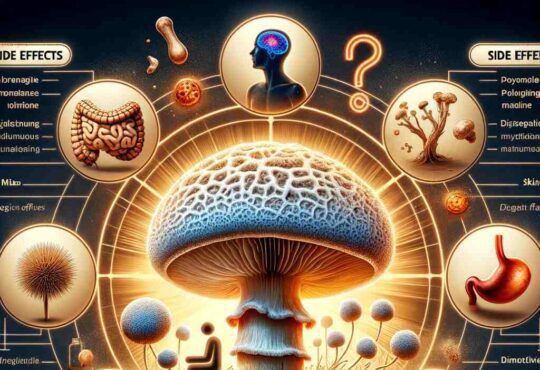I. Introduction of Herniated Disc
The role of imaging techniques in diagnosing discs Issues by MRI vs X ray:
Accurate and detailed imaging plays a vital role in diagnosing herniated discs.
By providing visual information, imaging helps healthcare professionals understand the extent and location of the disc damage.
It aids in the development of effective treatment plans tailored to individual patients.
Importance of accurate diagnosis for effective treatment:
- Obtaining an accurate diagnosis is crucial for determining the most appropriate treatment approach.
- A precise diagnosis enables healthcare providers to customize treatment plans based on the severity and location of the herniated disc.
- Effective treatment improves the chances of pain relief, functional recovery, and prevention of potential complications.




II. Understanding Herniated Discs
Defining herniated discs and their prevalence:
- Herniated discs, also known as slipped or ruptured discs, refer to the displacement of the spinal discs.
- These discs act as cushions between the vertebrae, allowing flexibility and shock absorption.
- Herniated discs are relatively common, affecting around 1 to 3% of the adult population.
Causes and risk factors leading to herniated discs:
- Herniated discs can be caused by degenerative changes, trauma, or excessive strain on the spine.
- Risk factors include age, gender (more prevalent in men), obesity, smoking, and repetitive lifting or bending motions.
Symptoms and potential complications associated with herniated discs:
- Symptoms vary depending on the location and severity of the herniated disc.
- Common symptoms include localized or radiating pain, numbness, tingling, muscle weakness, and reduced range of motion.
- In severe cases, herniated discs can lead to nerve compression, leading to more severe complications such as bowel or bladder dysfunction.
III. The Power of X-Ray Imaging
Introduction to X ray imaging and its historical significance:
- X-ray imaging is a widely used diagnostic tool that has revolutionized medical imaging since its discovery by Wilhelm Conrad Roentgen in 1895.
- It utilizes electromagnetic radiation to create an image of the internal structures of the body.
Mechanics and process of X ray imaging:
- X-ray machines emit a focused beam of X-rays that passes through the body.
- Dense structures, such as bones, absorb more X-rays and appear white on the resulting image, while softer tissues appear in various shades of gray.
Limitations and drawbacks of X-ray for diagnosing herniated discs:
- X-ray imaging is primarily used to assess the bony structures of the spine rather than the soft tissues, making it less effective in diagnosing herniated discs.
- It may not provide sufficient detail to accurately visualize the herniation, leading to potential diagnostic limitations.


IV. Unleashing the Might of MRI
Introduction to MRI (Magnetic Resonance Imaging):
- MRI is a powerful imaging technique renowned for its ability to visualize soft tissues, including nerves and intervertebral discs.
- It utilizes a magnetic field and radio waves to generate detailed cross-sectional images of the body.
In-depth explanation of how MRI works:
- During an MRI, the patient lies inside a large cylindrical machine that creates a powerful magnetic field.
- The magnetic field aligns the protons within the body, which are then excited by radio waves.
- By measuring the resulting signals emitted by the protons, a computer constructs highly detailed images.
Advantages of MRI in herniated disc diagnosis:
- MRI provides exceptional clarity, allowing for precise visualization of the spinal discs and surrounding structures.
- It offers multi-planar imaging capabilities, enabling healthcare professionals to view the herniated disc from various angles.
- The ability to differentiate between various soft tissues makes MRI particularly effective in diagnosing herniated discs.
V. Comparative Analysis: MRI vs X-Ray
Differentiating the utilization and purpose of mRI and X ray:
- X-ray imaging is primarily used to assess bony structures, whereas MRI is preferred for evaluating soft tissues.
- While X-ray provides a quick and low-cost initial assessment, MRI offers more detailed information for accurate diagnosis.
Examining the clarity and quality of images produced by each technique:
- X-ray images tend to have lower resolution and a limited ability to differentiate between tissues.
- MRI, on the other hand, produces high-resolution images with excellent tissue contrast, enabling precise identification of herniated discs.
Evaluating the accuracy and precision of herniated disc detection using MRI and Xray:
- X-ray imaging may not always capture subtle herniations, potentially leading to false negatives.
- MRI provides a higher level of sensitivity and specificity in detecting herniated discs, minimizing the chances of misdiagnosis.
VI. Clinical Implementation and Decision Making
Factors influencing the choice of imaging technique for herniated disc diagnosis:
- Clinical judgment, based on patient history, physical examination, and initial assessments, guides the decision-making process.
- The suspected severity and location of the herniated disc, as well as the patient’s overall health, play a significant role in choosing the appropriate imaging technique.
Cost considerations and insurance coverage related to MRI and X ray:
- The cost of MRI is generally higher than that of X-ray, primarily due to the advanced technology involved.
- Insurance coverage varies, but many insurance providers offer reimbursement for both MRI vs X ray scans.
Appropriate instances for utilizing MRI and X ray in the diagnosis process:
- X-ray imaging is often the initial choice when screening for potential bony abnormalities before considering MRI.
- MRI is recommended when there is a high suspicion or need for detailed soft tissue visualization, such as in cases of suspected herniated discs.
VII. Potential Risks and Safety Measures
Safety precautions and contrast agents used in MRI:
- MRI is generally considered safe, but certain precautions need to be taken, such as removing any metal objects or implants before the scan.
- Contrast agents may be used to enhance visibility during MRI, but their administration carries a slight risk of allergic reactions or kidney problems.
Radiation risks associated with X-ray imaging:
- X-ray imaging involves exposure to ionizing radiation, which carries a small but inherent risk.
- However, the radiation dose from X-rays is typically low, and modern equipment utilizes advanced techniques to minimize exposure.
Discussing safety concerns and risk mitigation strategies:
- Healthcare professionals ensure that the benefits of diagnostic imaging outweigh any potential risks.
- Strict adherence to safety protocols, appropriate use of contrast agents, and utilization of low-dose radiation techniques help mitigate any associated risks.
VIII. Future Developments and Emerging Technologies
Exploring advancements in MRI technology for enhanced herniated disc imaging:
- Ongoing research focuses on improving MRI sequences and protocols to achieve even higher resolution and shorter scan times.
- Development of specialized coils and advanced software algorithms aims to optimize the imaging of herniated discs.
Potential breakthroughs in X-ray imaging techniques for improved diagnostic accuracy:
- Researchers are investigating new X-ray technologies, such as phase-contrast imaging, to enhance soft-tissue visualization and improve diagnostic accuracy.
- Innovations in detector technology and image reconstruction algorithms show promising potential for advancing X-ray imaging in herniated disc diagnosis.
IX. Summary
- Accurate diagnosis is crucial in the effective management of herniated discs.
- While X-ray imaging has its merits, MRI stands out as the superior technique due to its detailed soft tissue visualization capabilities.
- The choice between MRI vs X ray should be based on individual patient factors, ensuring the most appropriate imaging technique is selected for optimal diagnosis and treatment planning.
FAQs
How long does an MRI and X ray for herniated disc diagnosis typically take?
The duration varies depending on the specific imaging requirements, but an MRI typically takes around 30 minutes to an hour, while an X-ray only requires a few minutes.
Are there any age or health restrictions for undergoing an MRI and X ray scan?
In general, there are no age restrictions for either MRI and X ray However, certain health conditions or the presence of metal implants may require special considerations.
Can an MRI and X ray diagnose other spinal conditions besides herniated discs?
Yes, both MRI and X-ray can aid in diagnosing various spinal conditions, including spinal fractures, tumors, infections, and degenerative diseases.
Is there any pain or discomfort associated with MRI and X ray imaging?
MRI is a painless procedure, although some patients might feel confined due to the machine’s design. X-ray imaging is typically painless, with minimal discomfort from positioning.
How soon can the results from an MRI and X ray be obtained?
Results from X-ray imaging can often be obtained immediately. MRI results may take longer as radiologists need to interpret the high-resolution images thoroughly. The timeframe for obtaining results can vary depending on the specific healthcare facility.






